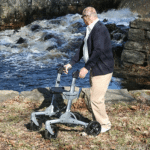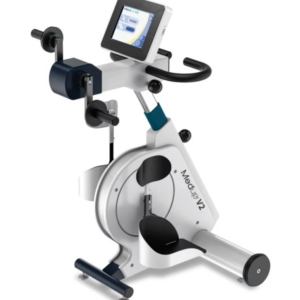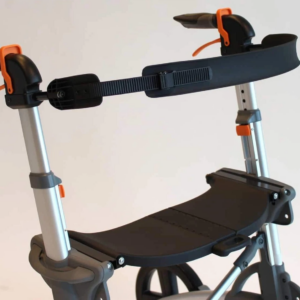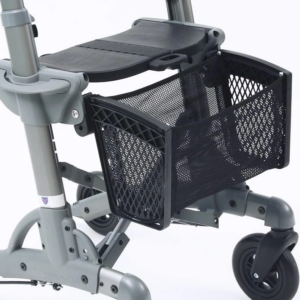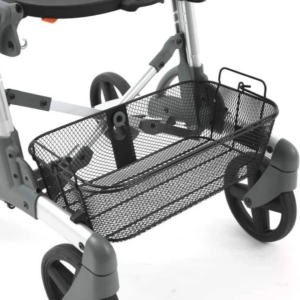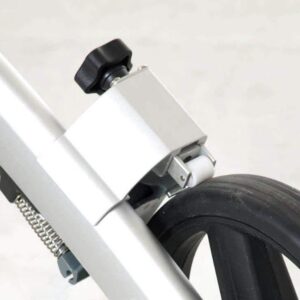
Using a rollator walker can be an intimidating thing to take on, especially as you age and experience many changes in your life. However, the possibility of increased instability and the need to have more support and help in staying mobile can lead you to start shopping for a walker.
If you or someone in your family needs help moving around and maintaining their independence and mobility, a rollator walker can be the perfect solution. When shopping for a rollator walker it is important to consider how it fits as well as how the features will suit your needs.
Why Walking Upright is Important
When you walk with a rollator walker it can often feel easier to push the walker and walk slightly behind it, but this method can actually cause you discomfort, pain and other issues. Walking inside the walker rather than behind it can help prevent a number of issues including:
- Sore back, neck and shoulders due to muscle strain
- Reduced circulation from important arteries getting compressed from bad posture
- Increased headaches and jaw pain resulting from the unconscious clenching of your jaw from leaning forward
- Can cut off blood flow to your brain resulting in memory issues
- Nerve pain when your nerves get ‘pinched’ between your skeletal system
How to Fit a Rollator Walker
When fitting your rollator walker to your body you want to focus on 2 things: your elbows and your wrists. In order to reduce stress on your back, shoulders and neck when you use your walker, you’ll adjust the height of the walker using these steps:
- Step inside the walker and first rest your hands on the handle grips
- With relaxed shoulders and hands on the grips you’ll be able to adjust the height so that your elbows bend at an angle of around 15 degrees
- Then with your arms relaxed at your sides, the top of the handle grips should line up with the inside of your wrist, approximately where the crease of your wrist is
Key things to know when looking for a rollator walker
Fitting a rollator walker can be a confusing process, but it’s often not a difficult one. There are a few things to keep in mind when going through the fitting and shopping process that can help make things easier.
You want to walk within the rollator
This may sound obvious, but it’s an essential thing to note. If you’re not walking within the frame of the rollator and are instead pushing it while you walk almost behind it, your back and shoulders are going to feel the effects rather quickly. When walking with your rollator you want to have the frame around you with the handles at your sides so that you are not hunching over.
A tall rollator does not mean you’ll walk upright
It may seem as though if your rollator is tall, you’ll naturally walk upright but this isn’t always the case. A tall rollator can have you leaning over to push it just as much as a short one. Ensure your rollator is fit to your height and body type before you stary using it.
Teach yourself to not slouch
As your body gets tired it can be hard to not slouch but it’s actually very bad for your shoulders and back and can lead to decreased mobility. Rollator walkers can both help and hinder your slouching, so you’ll want to put forth a concerted effort to not slouch and to instead stand upright.
Look for features you’ll use
Rollator walkers have many features that could be helpful to you. Built in seats, hand brakes, adjustable height and both regular and compact frames designed for indoor and outdoor use can all be features that will help you feel comfortable using a rollator walker.
A rollator walker can be a great solution
If you need some help maintaining your freedom and mobility a rollator walker can be the perfect solution for you. However, you’ll need to ensure that your take steps to properly fit the walker to your body in order to prevent other issues from occurring. Walking upright within your walker is the best way to prevent issues with your back as well as other physical concerns. Choosing a rollator with many features can help ensure that you’ll feel comfortable using it in a variety or situations.

